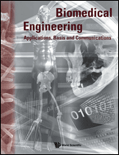
BIOMEDICAL ENGINEERING-APPLICATIONS BASIS COMMUNICATIONS
Scope & Guideline
Unveiling the latest breakthroughs in biomedical engineering.
Introduction
Aims and Scopes
- Biomedical Signal Processing:
Research on the processing, analysis, and interpretation of biological signals including EEG, ECG, and EMG, aimed at improving diagnostic and therapeutic techniques. - Medical Imaging Technologies:
Development and optimization of imaging modalities such as MRI, CT, and ultrasound, along with advanced algorithms for image segmentation, enhancement, and classification. - Machine Learning and AI in Healthcare:
Application of machine learning, deep learning, and AI techniques to automate diagnosis, predict disease outcomes, and improve patient management through data-driven approaches. - Tissue Engineering and Biomaterials:
Studies focusing on the design and development of scaffolds, hydrogels, and other biomaterials for tissue regeneration and repair, integrating engineering with biological responses. - Wearable and Implantable Devices:
Research dedicated to the design and implementation of wearable or implantable devices aimed at monitoring physiological parameters or delivering therapeutic interventions. - Rehabilitation Engineering:
Exploration of engineering solutions to enhance rehabilitation practices, including the development of assistive devices and systems for physical therapy. - Biomechanics and Biomechanical Modeling:
Investigations into the mechanical behavior of biological tissues and systems, employing computational models to understand and predict biomechanical phenomena.
Trending and Emerging
- AI and Machine Learning Applications:
There is a significant increase in studies employing AI and machine learning algorithms for diagnosing diseases, analyzing medical images, and personalizing treatment plans. - Telemedicine and Remote Monitoring:
The rise of telehealth solutions and remote patient monitoring technologies has become a prominent theme, especially in light of global health challenges that necessitate distance care. - Integration of IoT in Healthcare:
Research on the Internet of Things (IoT) in healthcare is expanding, focusing on smart devices that monitor health metrics and facilitate real-time data transmission for improved patient outcomes. - Personalized Medicine:
An emerging focus on personalized and precision medicine, utilizing genetic, environmental, and lifestyle factors to tailor individualized treatment strategies. - Advanced Biomaterials and Nanotechnology:
The development of novel biomaterials, particularly those at the nanoscale, is gaining attention for their potential applications in drug delivery, tissue engineering, and regenerative medicine. - Multimodal Data Fusion:
Increasing interest in combining various types of data (e.g., imaging, genetic, and clinical data) to enhance diagnostic accuracy and treatment efficacy.
Declining or Waning
- Traditional Rehabilitation Techniques:
Research on conventional rehabilitation methods is waning as more emphasis is placed on technology-driven approaches, such as robotic assistance and virtual reality. - Basic Laboratory Studies:
Experimental laboratory studies that lack direct clinical applications are becoming less common, with a shift towards translational research that bridges laboratory findings with clinical practice. - Non-Technical Health Studies:
Research focusing on purely qualitative or non-technical aspects of health and illness is decreasing as the field moves towards data-driven, quantitative methodologies. - Single-Discipline Focus:
Studies that solely focus on one discipline without interdisciplinary integration are less frequent, as collaborative approaches that combine engineering, medicine, and data science gain prominence.
Similar Journals

Physical and Engineering Sciences in Medicine
Pioneering Research for Tomorrow's Medical ChallengesPhysical and Engineering Sciences in Medicine is an esteemed peer-reviewed journal published by SPRINGER, dedicated to advancing the interdisciplinary fields of biomedical engineering and biophysics. With an ISSN of 2662-4729 and an E-ISSN of 2662-4737, this journal has carved a niche for itself since its inception in 2020. Situated in the Netherlands, it serves as a global platform for innovative research and developments that bridge the physical sciences and engineering with medical applications. The journal boasts a commendable range of quartile categorizations, highlighting its impact in various sectors including Instrumentation (Q1), Radiology (Q2), and Biotechnology (Q2). Its Scopus rankings further emphasize its relevance and quality, placing it in the top 15% in several categories. Being an Open Access title, it promotes the dissemination of knowledge, ensuring that vital research is accessible to all, thereby fostering collaboration among researchers, professionals, and students alike. The journal's objectives include promoting cutting-edge research, enhancing biomedical technology, and addressing complex health challenges through innovative engineering solutions, establishing it as a vital resource in the scientific community.
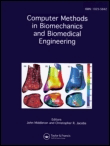
COMPUTER METHODS IN BIOMECHANICS AND BIOMEDICAL ENGINEERING
Advancing the Frontiers of Biomechanics and Biomedical EngineeringCOMPUTER METHODS IN BIOMECHANICS AND BIOMEDICAL ENGINEERING, published by TAYLOR & FRANCIS LTD, is a leading journal dedicated to the interdisciplinary field of biomechanics and biomedical engineering. With an ISSN of 1025-5842 and an E-ISSN of 1476-8259, this journal has been a significant resource since its inception in 1997 and will continue to publish cutting-edge research until 2024. The journal holds a respectable position in the academic community, categorized in Q3 of multiple domains including Bioengineering, Biomedical Engineering, and Human-Computer Interaction, reflecting its relevance across diverse fields. Although the journal does not offer open access, it provides valuable insights and methodologies essential for researchers, professionals, and students engaged in advancing computational techniques and their application in medicine and engineering. With Scopus rankings highlighting its growing influence, particularly in the Biomedical Engineering and Human-Computer Interaction sectors, this journal plays a crucial role in fostering innovation and enhancing the understanding of biomechanical systems through computational methods.

Annual Review of Biomedical Engineering
Catalyzing Interdisciplinary Insights in Biomedical EngineeringAnnual Review of Biomedical Engineering, published by Annual Reviews, stands as a leading academic journal dedicated to the rapidly evolving field of biomedical engineering. With an impressive impact factor that reflects its high citation rates and rigorous peer-review process, this journal offers critical insights by synthesizing cutting-edge advancements and applications in both biomedical engineering and miscellaneous medicine. The journal, which is available in both print (ISSN: 1523-9829) and electronic formats (E-ISSN: 1545-4274), serves as an essential resource for researchers, professionals, and students aiming to stay abreast of significant developments and emerging trends. As of 2023, it is recognized in the top tier (Q1) for both Biomedical Engineering and Medicine, showcasing its esteemed position within the academic community, reflected in its high Scopus rankings. Spanning from 1999 to 2024, the Annual Review of Biomedical Engineering continues to catalyze interdisciplinary collaboration and innovation at the intersection of engineering and healthcare.

Biomedical Engineering Letters
Fostering collaboration for innovative biomedical solutions.Biomedical Engineering Letters, published by SpringerNature, is a prominent journal in the field of Biomedical Engineering. With a robust ISSN of 2093-9868 and E-ISSN of 2093-985X, this esteemed journal has established itself as a vital resource for researchers and professionals seeking to advance their knowledge and share groundbreaking findings. Recognized for its quality, Biomedical Engineering Letters holds a distinguished ranking in Scopus, positioned at #94/303 (69th percentile) in the Biomedical Engineering category. The journal covers a diverse scope within biomedical engineering, providing an important platform for innovative research from 2011 to 2024 and facilitating the exchange of ideas among scholars. Although it operates under a subscription model, the journal's commitment to enhancing the field makes it an indispensable reference for those engaged in cutting-edge biomedical research in Germany and globally.
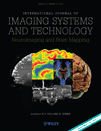
INTERNATIONAL JOURNAL OF IMAGING SYSTEMS AND TECHNOLOGY
Empowering Insights in Biomedical Imaging and BeyondINTERNATIONAL JOURNAL OF IMAGING SYSTEMS AND TECHNOLOGY, published by Wiley, is a leading journal dedicated to advancing the field of imaging systems and technologies. With an ISSN of 0899-9457 and E-ISSN 1098-1098, this esteemed journal offers a platform for high-quality research spanning essential interdisciplinary areas, including Biomedical Engineering, Computer Science, and Health Informatics. Recognized for its impactful contributions, it holds a commendable position in the Q2 quartile across multiple categories as of 2023. The journal boasts an excellent Scopus ranking, with notable acknowledgments like rank #49 out of 333 in Radiology, Nuclear Medicine, and Imaging, showcasing its relevance and importance in the academic community. Publishes annually from 1989 to 2024, it aims to bridge gaps in knowledge and foster innovative developments through rigorous peer-reviewed articles. Though it operates under a traditional access model, the journal maintains an accessible repository of cutting-edge research, making it indispensable for researchers, professionals, and students alike seeking to stay at the forefront of imaging technology advancements.
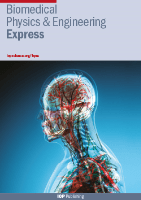
Biomedical Physics & Engineering Express
Exploring the Future of Biophysics and Patient CareBiomedical Physics & Engineering Express, published by IOP Publishing Ltd, serves as a dynamic platform for the dissemination of groundbreaking research in the interdisciplinary domains of biomedical physics, engineering, and related fields. With a focus on innovative solutions for healthcare challenges, the journal extends its reach to a global audience, providing valuable insights that influence both academic research and practical applications. Operating under an open-access format, this journal ensures that vital scientific discoveries are readily available to researchers, professionals, and students alike. Ranking within the Q3 and Q4 quartiles across various categories—including Bioengineering and Biomedical Engineering—indicates its emerging influence in the scientific community since its inception in 2015. With an increasing footprint in Scopus rankings and a commitment to advancing knowledge in subfields such as biophysics and health informatics, Biomedical Physics & Engineering Express plays a crucial role in shaping future innovations in healthcare technology and patient care.
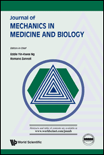
Journal of Mechanics in Medicine and Biology
Exploring the Intersection of Mechanics and MedicineThe Journal of Mechanics in Medicine and Biology, published by World Scientific Publishing Co Pte Ltd, serves as a critical platform for interdisciplinary research at the intersection of engineering and biomedical sciences. With an ISSN of 0219-5194 and E-ISSN of 1793-6810, this esteemed journal has been dedicated to exploring the mechanical principles that govern biological systems since its inception in 2008. Based in Singapore, it addresses a diverse range of topics, from biomaterials to biomechanics, contributing valuable insights into the field’s evolving landscape. Although currently positioned in Q4 of Biomedical Engineering according to the 2023 category quartiles, it is poised for growth and increased visibility within the scientific community, fostering innovation and collaboration among researchers, professionals, and students alike. The journal emphasizes the importance of cutting-edge research and its practical implications, making it a vital resource for those striving to enhance the future of medical technologies and biological understanding.

IEEE Open Journal of Engineering in Medicine and Biology
Bridging the gap between medicine and technology.IEEE Open Journal of Engineering in Medicine and Biology is a premier Open Access journal published by the esteemed IEEE-INST ELECTRICAL ELECTRONICS ENGINEERS INC, dedicated to advancing the interdisciplinary fields of biomedical engineering and medicine. Since its inception in 2020, the journal has quickly established itself within the academic community, boasting a notable ranking of #49 out of 303 in the Biomedical Engineering category on Scopus and achieving an impressive 83rd percentile. With an objective of disseminating high-quality research and innovative developments that bridge engineering and medical sciences, the journal is committed to fostering collaboration among researchers, healthcare professionals, and policymakers. Operating with Open Access since 2020 allows for wider accessibility and dissemination of cutting-edge findings, promoting the exchange of knowledge vital for tackling contemporary challenges in health technology. As the journal continues to grow through to 2024, it remains a vital resource for anyone invested in the enhancement of medical technology and the betterment of patient care.
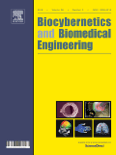
Biocybernetics and Biomedical Engineering
Exploring the Synergy of Cybernetics and MedicineBiocybernetics and Biomedical Engineering, published by ELSEVIER in the Netherlands, is a prestigious journal that stands at the forefront of the intersecting fields of biomedical engineering and artificial intelligence. With an impressive Impact Factor that places it in the Q1 category for Biomedical Engineering, this journal not only ranks 17th out of 303 in Scopus but also boasts a remarkable percentile ranking of 94th, highlighting its influence and relevance within the scientific community. Since its inception in 2008, Biocybernetics and Biomedical Engineering has aimed to publish cutting-edge research that integrates principles of cybernetics with technological advancements in health care, thereby fostering innovations that improve patient outcomes. Dedicated to advancing knowledge in biomedical technology, the journal serves as a vital resource for researchers, professionals, and students seeking to explore the latest developments and methodologies in the field.

Journal of Biomimetics Biomaterials and Biomedical Engineering
Innovating Healthcare through Nature-Inspired DesignThe Journal of Biomimetics Biomaterials and Biomedical Engineering, published by TRANS TECH PUBLICATIONS LTD, stands at the forefront of interdisciplinary research that merges biology with engineering to address real-world challenges in healthcare and material science. Since its inception in 2014, the journal has contributed valuable insights into the development of innovative biomaterials and biomedical applications, showcasing research excellence in its fields, including biotechnology and bioengineering. With an ISSN of 2296-9837 and an E-ISSN of 2296-9845, this journal provides a platform for both emerging and established researchers to disseminate their work, fostering knowledge transfer across the global scientific community. Currently positioned in the Q4 quartile across categories such as Bioengineering, Biomedical Engineering, and Biotechnology, it aims to enhance its impact through open-access policies and rigorous peer-review processes. With its headquarters in Germany, the journal welcomes diverse contributions from around the world, shaping the future of biomimetic technologies and advancing our understanding of complex biomedical systems.